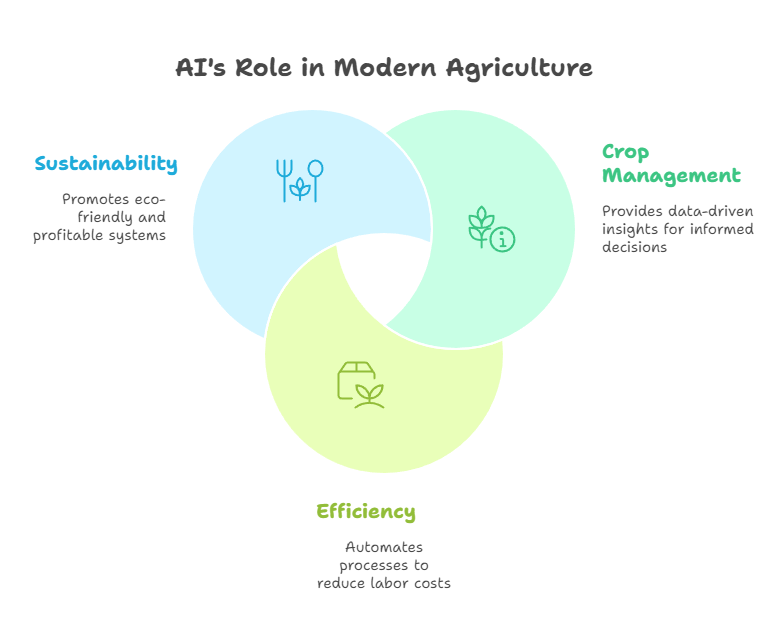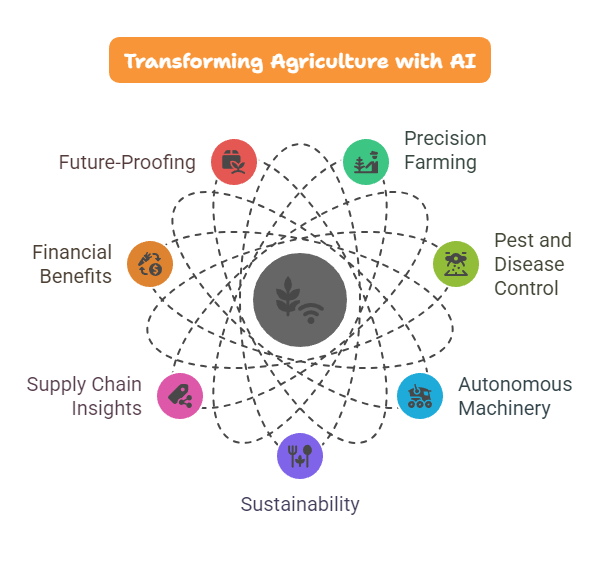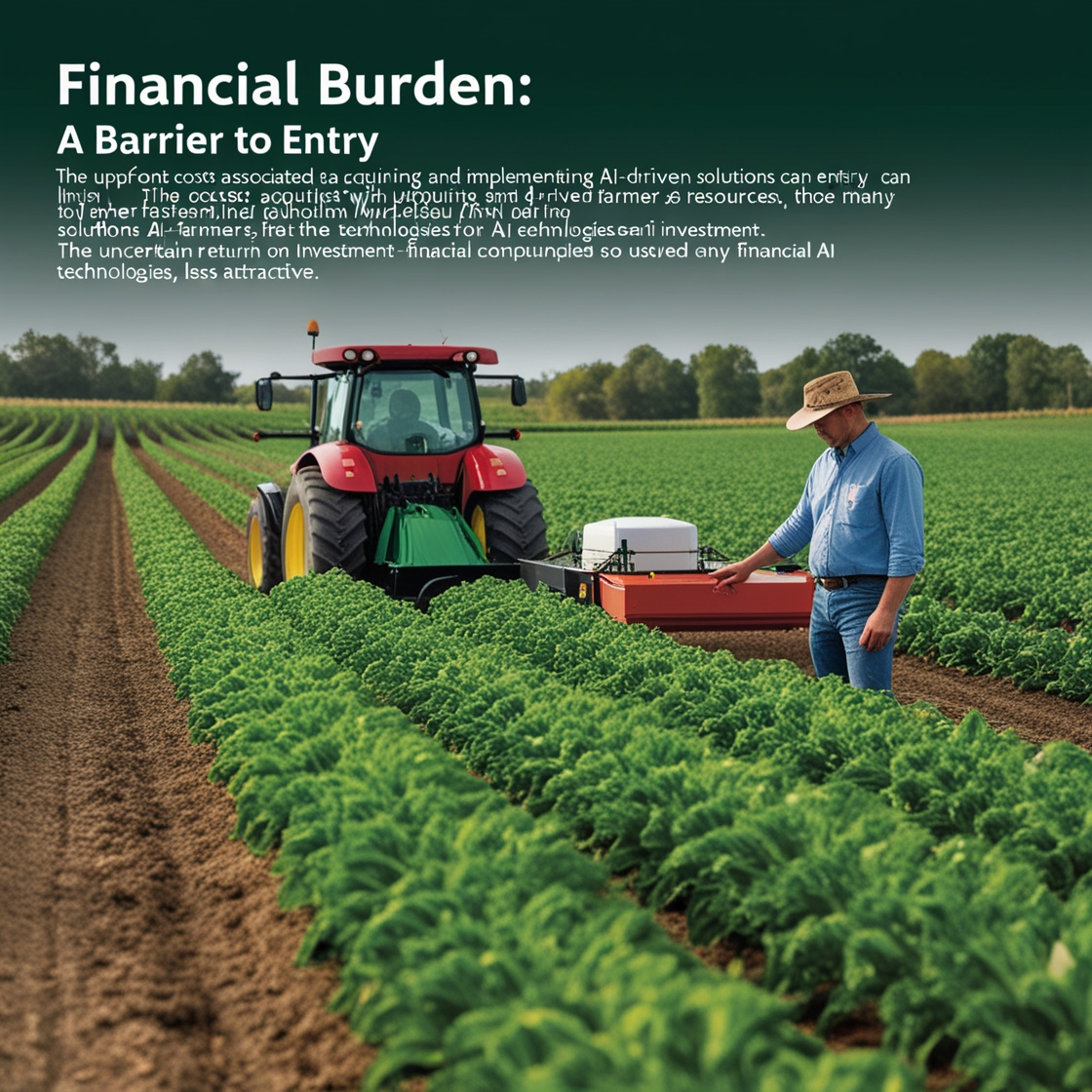7 Benefits of AI in Modern Agriculture
Imagine a world where farms run themselves—crops are planted, watered, and harvested without human intervention. Thanks to artificial intelligence (AI), this isn’t a futuristic dream—it’s happening right now. AI-powered technologies are revolutionizing agriculture, making farms smarter, more efficient, and highly sustainable.
From precision farming and automated irrigation to AI-driven pest control and predictive analytics, AI is transforming the way we grow food. In this article, we’ll explore seven game-changing benefits of AI in modern agriculture and why its adoption is crucial for the future of farming.

7 Benefits of AI in Modern Agriculture
1. Precision Farming for Higher Yields
AI-Powered Data Analysis
AI helps farmers analyze real-time data from sensors, drones, and satellites to optimize planting and harvesting schedules. This ensures maximum productivity with minimal waste.
Soil and Crop Monitoring
AI-driven sensors and machine learning models assess soil quality, moisture levels, and crop health. This allows farmers to take immediate action to prevent crop loss.
Smart Irrigation Systems
Automated irrigation powered by AI ensures that crops receive the right amount of water at the right time, reducing water wastage and improving yields.
2. AI-Powered Pest and Disease Control
Early Detection of Pests and Diseases
AI-powered image recognition and machine learning models can detect signs of pest infestations and plant diseases before they spread, helping farmers take preventive measures.
Autonomous Pest Control Drones
Drones equipped with AI technology can identify and spray affected areas with precision, reducing the use of harmful pesticides.
Predictive Analysis for Crop Protection
Machine learning algorithms analyze historical data and weather conditions to predict pest outbreaks, allowing proactive pest management strategies.
3. Increased Efficiency with Autonomous Machinery
AI-Driven Tractors and Harvesters
Self-operating machinery can plant, fertilize, and harvest crops with extreme precision, reducing labor costs and increasing efficiency.
AI-Powered Robotics for Labor-Intensive Tasks
Agricultural robots can perform repetitive tasks like fruit picking, sorting, and packaging, freeing up human workers for more complex jobs.
24/7 Operation for Maximum Productivity
AI-driven machines can work around the clock without fatigue, increasing overall farm output.
4. Enhanced Sustainability and Resource Management
Reduced Water and Fertilizer Usage
AI optimizes resource allocation, ensuring that only the necessary amount of water and fertilizers are used, reducing waste and environmental impact.
AI-Powered Climate Adaptation
Machine learning models analyze climate patterns and suggest the best crops to plant based on future weather conditions, improving resilience to climate change.
Lower Carbon Footprint
AI-driven precision farming reduces the need for heavy machinery and excessive chemical usage, minimizing the carbon footprint of agriculture.
5. Improved Supply Chain and Market Insights
AI for Demand Forecasting
AI analyzes market trends, weather patterns, and consumer behavior to predict demand, helping farmers adjust their production accordingly.
Smart Logistics and Distribution
AI-driven supply chain management ensures that perishable goods are transported efficiently, reducing food waste and maximizing profits.
Direct-to-Consumer AI Platforms
AI-powered platforms connect farmers directly with consumers and retailers, improving pricing transparency and reducing middlemen costs.
6. Financial Benefits and Cost Reduction
AI-Optimized Budgeting and Cost Management
Farmers can use AI-driven financial tools to track expenses, manage resources, and plan budgets more effectively.
Reduced Dependency on Manual Labor
With AI-powered automation, farms require fewer human workers, cutting down operational costs while maintaining high productivity.
AI-Driven Risk Management
AI models analyze weather forecasts, market conditions, and potential risks to help farmers make informed financial decisions and avoid losses.
7. Future-Proofing Agriculture with AI
AI-Powered Research and Development
AI accelerates agricultural innovation by identifying new farming techniques, hybrid crops, and sustainable practices.
AI in Vertical and Urban Farming
AI-driven hydroponic and vertical farming systems allow crops to be grown in urban areas, reducing dependence on traditional farmland.
AI’s Role in Global Food Security
By increasing efficiency and sustainability, AI contributes to solving food scarcity issues, ensuring a stable food supply for the growing global population.

Frequently Asked Questions (AI in agriculture)
What are the benefits of using AI in agriculture?
AI enhances productivity, reduces costs, improves sustainability, and enables real-time monitoring of crops and livestock.
What are the benefits of AI for Class 7 students studying agriculture?
AI simplifies agricultural learning through interactive tools, real-world case studies, and simulations, making farming concepts easier to grasp.
What are the benefits of AI being available 24/7 in farming?
AI-powered machines and systems work continuously without breaks, maximizing productivity and efficiency while minimizing labor costs.
What are four key advantages of AI in agriculture?
- Increased crop yields through precision farming
- Reduced operational costs with automation
- Enhanced pest and disease control
- Improved sustainability and resource efficiency
Conclusion
Artificial intelligence is reshaping modern agriculture, making it more efficient, sustainable, and profitable. From precision farming and pest control to autonomous machinery and AI-powered supply chains, the benefits of AI in farming are undeniable. As AI technology continues to evolve, its role in agriculture will only expand, ensuring a smarter, more resilient food production system.
Are you ready to embrace AI-driven farming? Share your thoughts in the comments below and explore how AI can revolutionize your agricultural practices!



